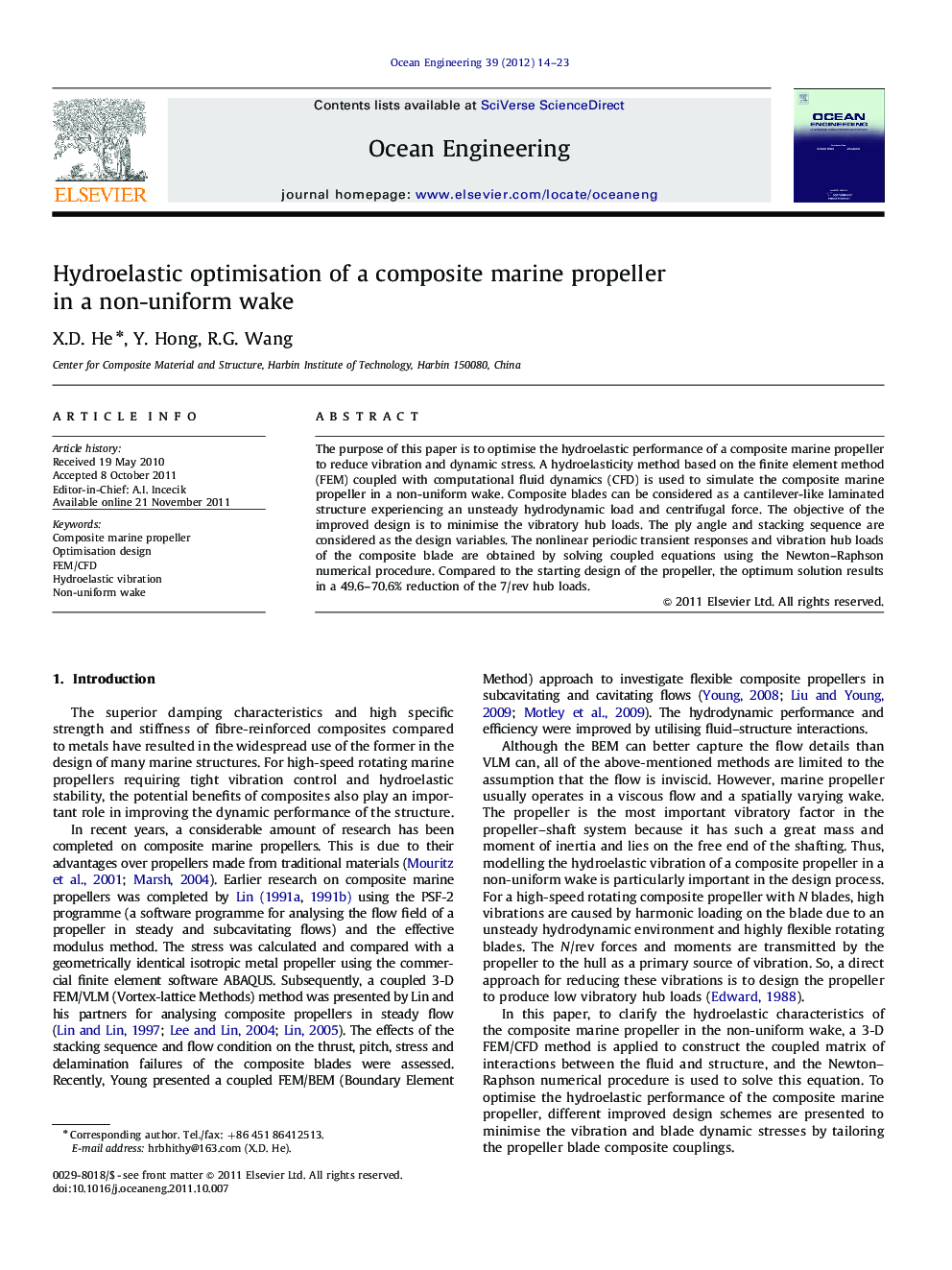| Article ID | Journal | Published Year | Pages | File Type |
|---|---|---|---|---|
| 1726396 | Ocean Engineering | 2012 | 10 Pages |
The purpose of this paper is to optimise the hydroelastic performance of a composite marine propeller to reduce vibration and dynamic stress. A hydroelasticity method based on the finite element method (FEM) coupled with computational fluid dynamics (CFD) is used to simulate the composite marine propeller in a non-uniform wake. Composite blades can be considered as a cantilever-like laminated structure experiencing an unsteady hydrodynamic load and centrifugal force. The objective of the improved design is to minimise the vibratory hub loads. The ply angle and stacking sequence are considered as the design variables. The nonlinear periodic transient responses and vibration hub loads of the composite blade are obtained by solving coupled equations using the Newton–Raphson numerical procedure. Compared to the starting design of the propeller, the optimum solution results in a 49.6–70.6% reduction of the 7/rev hub loads.
